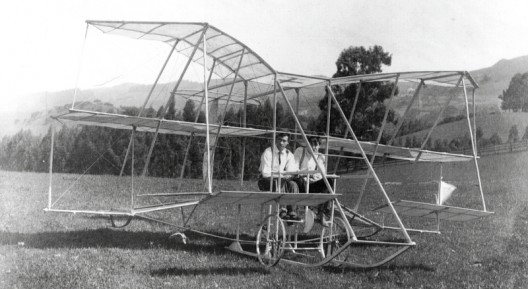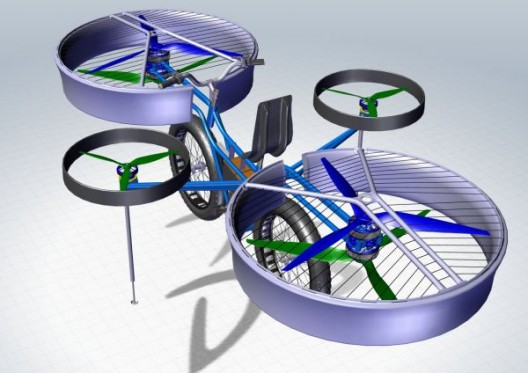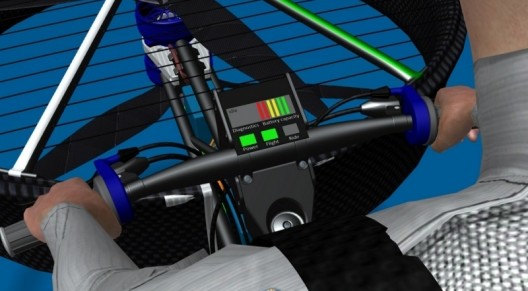The dream of flying a bicycle is older than the special effects magic of ET, harking back to the aviettes of turn-of-the-20th century France and the works of Jules Verne and Czech writer Jaroslav Foglar. A Czech design team may soon make this fantasy more believable.
Technodat, a Czechoslovakian CAD developer; Evektor, designer and manufacturer of light sport and general aviation aircraft; and Duratec, a bicycle and bike supplies firm, have consolidated efforts with Dassault Systémes and CAXMIX – both partners providing software platforms, to make this long-sought dream a reality.
Their so-far virtual reality is the FBike, a velocipede with six propellers that can make brief hops off the ground and stabilize itself in all three axes while in flight. First tests of the actual machine are due in August, and it will be seen whether it can jump over traffic and make its way in a third dimension. The makers are doing this as a proof of concept, with no expectation that it will be produced in large numbers.
From the team’s web site, the basic parameters for this flying bike are ambitious, with paired 10 kilowatt motors driving the main, large rotors and single 3.5 kW motors helping stabilize the bike laterally and provide forward thrust. These smaller units will be housed in “revolving consoles.” Although combined power of the listed power plants adds up to 47 kW (63 horsepower), the web site claims a total performance of 50 kW 67 hp).
Two contra-rotating, 1,300 millimeter (51 inches) main propellers are placed in pairs at the front and rear of the bike and single 650 mm (26 inches) props fan out on either side of the rider. All propellers are surrounded by composite ducts, and various shielding schemes are shown on the project web site.
Controlling these will be the tricky part, just as it was for the designers at e-volo, whose 16-rotor prototype flew earlier this year. Keeping things stable and maneuverable requires delicate manipulation of powered application and nuanced controls. While the e-volo machine used an electronic game joystick, the FBike will use more conventional handlebars to provide control input.
50 Amp-hour lithium-polymer batters will provide about three to five minutes of flight time, but up to 30 to 50 minutes of ride time (possibly depending on rider assistance). Maximum speed, not specified as aerial or terrestrial, is 50 km/hr (31 mph).
The light aluminum frame and stock bike components counter the weight added by motors, batteries and propellers. The bike still weighs in at a hefty 85 kilograms (187 pounds) without a pilot – too heavy to be licensed as an ultralight in the U. S. Maximum loaded weight will be 170 kg (374 pounds), something drivers will not want dropping from the sky onto their car roofs.
Limiting this to a one-off is probably a good thing. Imagining fleets of bike messengers hopping over cars and wedging their way through downtown traffic jams with their outrigger fan housings scraping against Toyotas and Lamborghinis would be a lawyer’s dream and a city planner’s nightmare.
The prototype will be presented at the International Engineering Fair in Brno in September.




Comments 2
Interesting minimum VTOL.
Note: the U.S. empty weight for an ultralight vehicle (defined in FAR 103) is actually 254 pounds. (this vehicle should qualify as an ultralight)
(Editor’s Note: You are correct, sir. Your distracted editor was thinking of glider ultralight weights.)
the byke may be provided with a parachute for emergency or routine landing and a two flexible side stands with rotary balls as in trolleys for smoothe landing